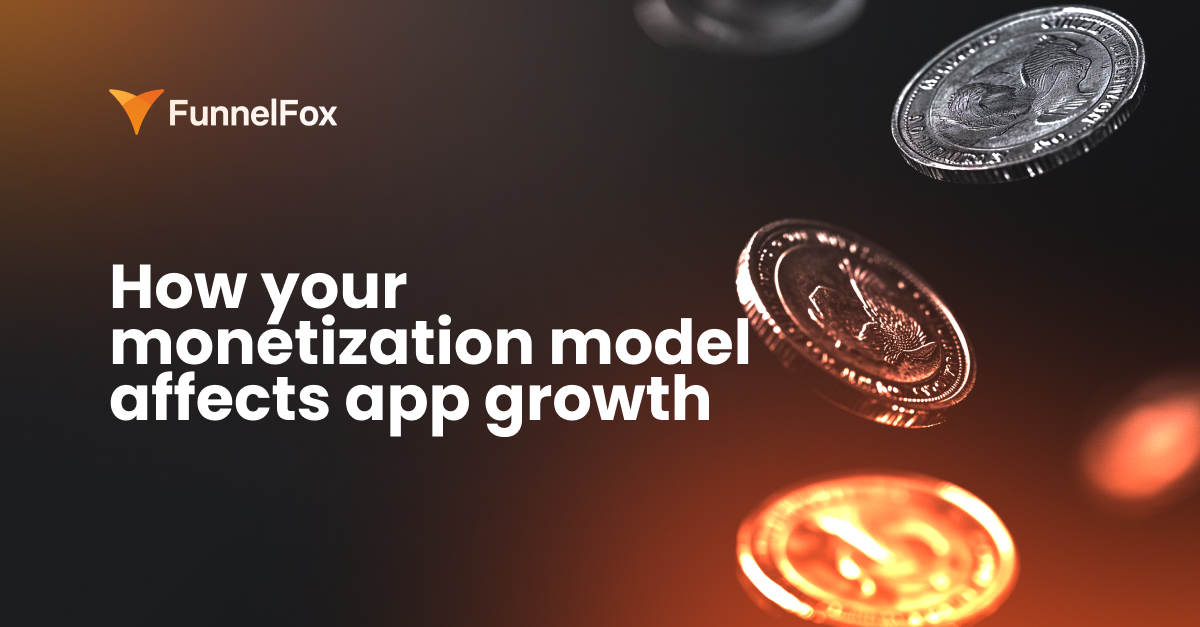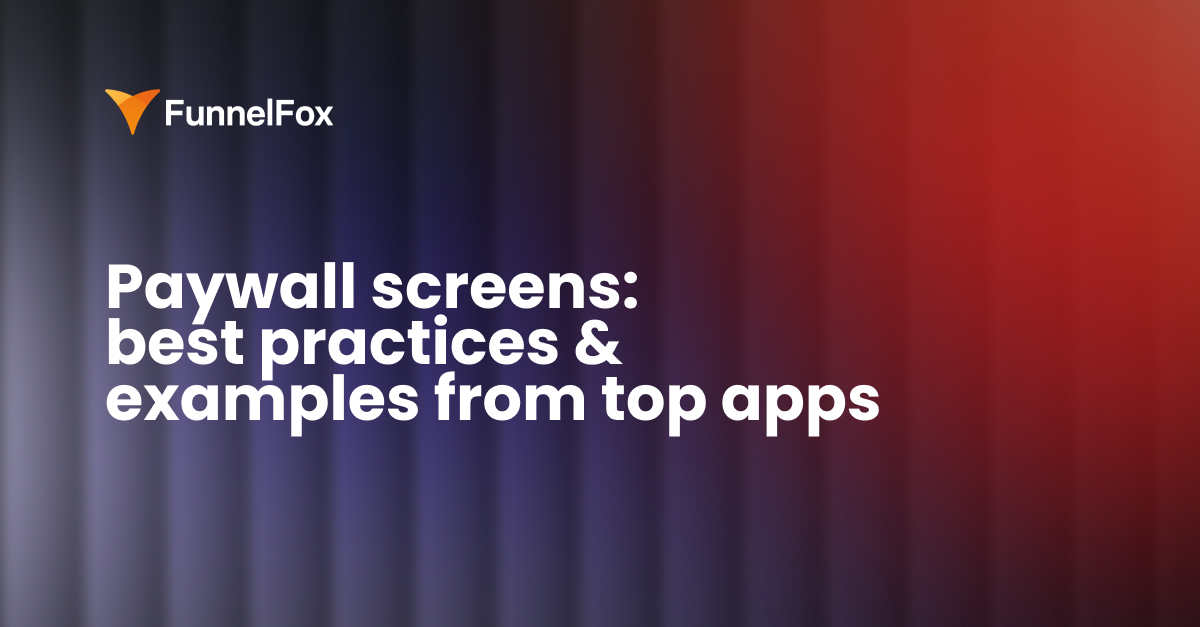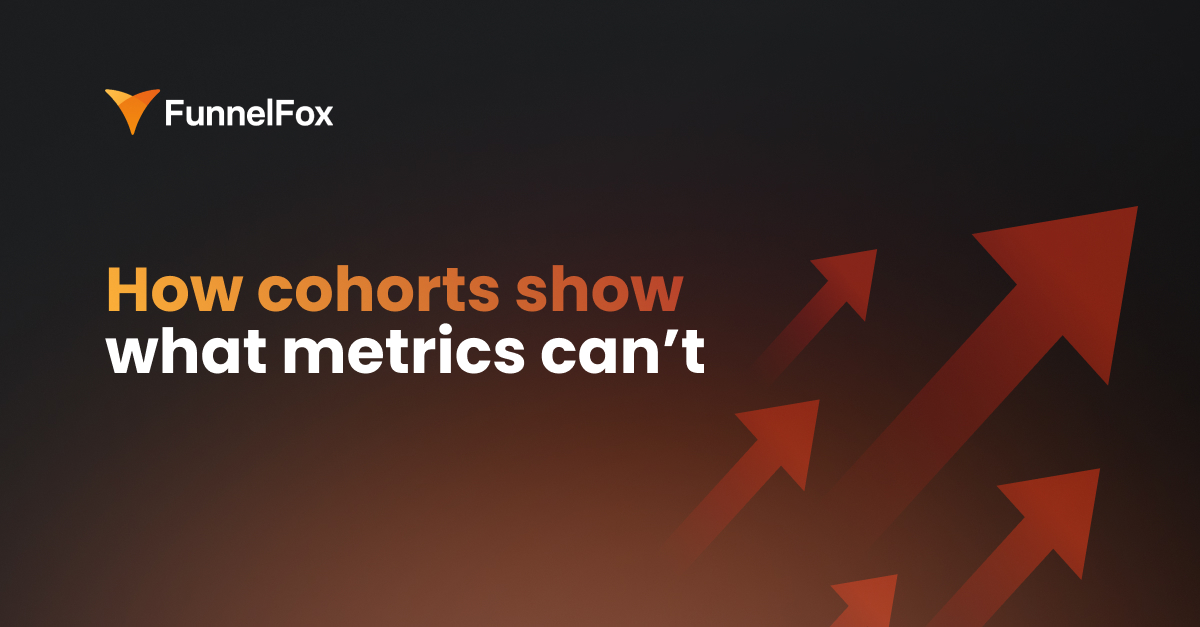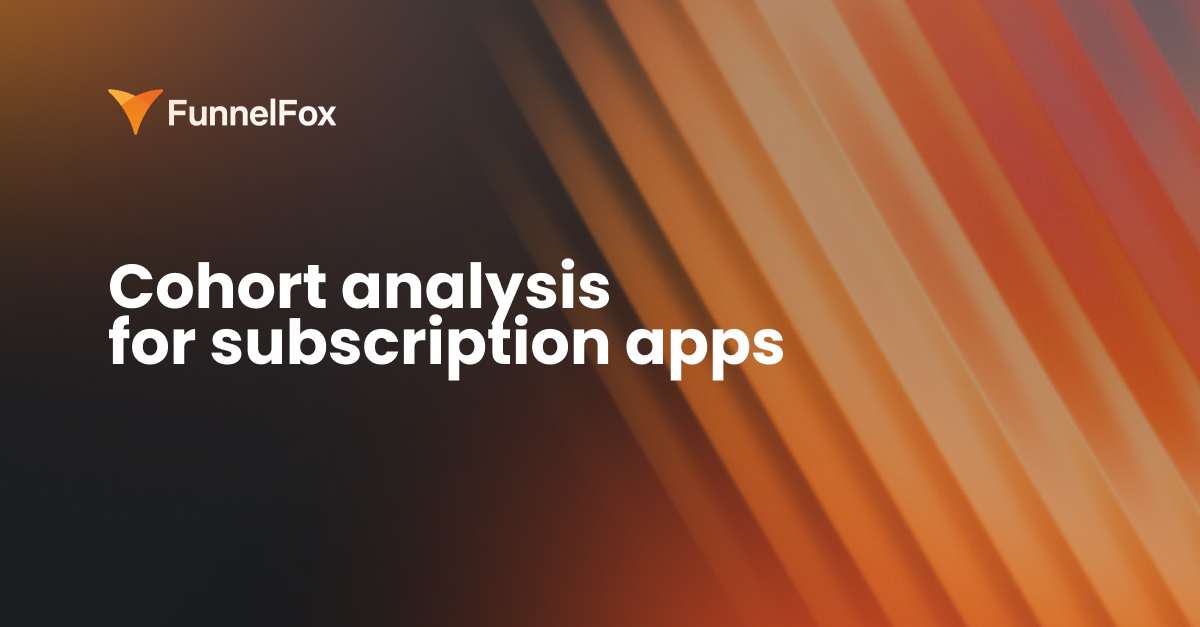The monetization model you choose affects more than just revenue — it directly impacts how quickly your user base grows and how long users remain engaged. Both acquisition and retention hinge on how your app makes money.
In 2025, it’s rare to see apps rely on a single pricing model. Most top performers blend free, paid, and everything in between. But before we talk hybrids, let’s break down the classic app pricing models and explore how each one impacts growth.
Here’s a summary table of the key monetization models. Save it as a quick reference, and then we’ll unpack each one below.
| Monetization model | Acquisition | Retention | Tactics | Works for |
|---|---|---|---|---|
| Free + ads | Easiest entry, cheap installs | Low (ad fatigue, churn D1/D7) | Rewarded ads, remove ads, ad capping | Hyper-casual, utilities, news |
| Freemium | Faster base growth, high activation | 2–10% conversion to paid, depends on upsell logic | Success moments, soft paywalls, nudges | Productivity, health & fitness, edtech |
| Free trial | Higher friction (if requires upfront payment) | High due to intentional engagement | Paywall after onboarding, reminders | Fitness, edtech, productivity |
| Subscription | Depends on entry model | High if value is refreshed regularly | Pause, swap, retry, in-funnel upsell | Health, edtech, SaaS, content |
| One-time purchase | High barrier, expensive acquisition | Formally high (no recurring payments) | Upgrades, new products | Niche tools, premium apps, courses |
| IAP | Free entry, high install rate | Balance of value vs pay-to-win | Unlockables, boosters, custom items | Games, content, utilities |
| Consumables | Easy entry, cheap traffic | Depends on “booster vs barrier” balance | Energy, tokens, bundles, daily offers | Games, AI/generative apps, streaming |
| Paymium | Highest friction | Strong retention if value is strong | Premium UX, brand trust | Music, pro software, niche markets |
| Hybrid | Broad entry + upgrade ladder | Multi-layer retention | Mixed models | Most top apps in 2025 |
Free + ads: Fast growth, fragile retention
The “free with ads” model is a mobile classic. The idea is simple: users pay with attention instead of money. This model scales well, but almost always hits the same wall: where does monetization end and irritation begin?
Impact on acquisition
This model is an easy entry point, so installs go up and traffic stays cheap. Free apps pick up users faster, even without brand recognition. But ad-driven revenue depends on scale — without enough daily active users and decent session length, you’re not covering CAC.
Impact on retention
For acquisition, this setup is nearly perfect, but retention tends to fall apart. Ad fatigue lowers your D1 and D7, pre-rolls break the flow, and the whole thing feels disposable.
When users see an ad after every tap, they assume the product itself holds little value, so they bounce. In many cases, churn happens after the very first session.
What makes it work better
- Use rewarded or opt-in ads instead of forced ones.
- Prioritize native/in-feed formats and set frequency caps.
- Delay ad triggers until after the “aha moment”, not in the first 30–60 seconds.
- Try ad sequencing (e.g. banner → rewarded) instead of hammering users with pre-rolls.
- A/B test ad density against session length, ARPDAU, and retention (D1/D7).
- Offer “remove ads” as a $2–$5 upsell and a gateway to hybrid models (IAPs, subscriptions).
Best use cases
This model fits best when users expect quick, lightweight, one-off value — like hyper-casual games or basic tools (QR scanners, flashlights). Free + ads isn’t built for long-term retention, but it’s still a powerful way to enter the market fast and build broad reach.
Freemium: Fast growth, but upgrades make or break it
Freemium is still the go-to model for B2C apps. The core experience is free, while premium features unlock through a one-time purchase or subscription. Its strength is clarity — “basic is free, extras cost.” Its weakness is the risk of getting stuck between value and conversion if the upgrade path is poorly designed.
Impact on acquisition
For acquisition, freemium is a goldmine. User bases grow way faster than paid apps, and the low barrier to entry and “no-risk try-before-you-buy” feel lead to higher activation.
Impact on retention
Retention, however, is less predictable. It depends less on how good your free tier is and more on how well you guide users toward upgrading.
Benchmarks put freemium conversion at 2–5% of free users upgrading to paid, and top performers hit 6–8% when premium features surface at the right moment.
What makes it work better
- Trigger paywalls at success moments, right when users achieve something and are ready for more.
- Use soft paywalls — let users try features with light restrictions instead of hard blocks.
- Add behavioral nudges (limit reminders, highlight premium features, guide attention).
- Offer tiered pricing.
- Refine your value messaging. Premium shouldn’t push; it should clarify and invite.
Best use cases
Apps with a clear split between free and premium value — think productivity, health & fitness, edtech, or mass-market SaaS.
Best suited for long funnel journeys where retention matters more than instant monetization.
Free trial: Fast test of value, intentional retention
The free trial model runs on a simple promise: full access to premium features for a limited time, usually 7 or 14 days.
Impact on acquisition
Free trials may add friction at the top of the funnel if they require a payment method upfront — some users drop off immediately. But that filter is a feature, not a bug — it means the people who start a trial usually intend to test the product, not just window-shop.
Impact on retention
Trials drive intentional engagement: users try to squeeze maximum value out of the product during the 7–14 day window. Retention often beats freemium, and trial conversion climbs even higher when users are asked to enter payment details upfront.
On top of that, trials tend to convert better than direct paywalls. According to Adapty’s State of In-App Subscriptions 2025 report, trial-to-paid rates range from ~18% to nearly 40% depending on category, with Health & Fitness and Education apps leading the pack. In most verticals, trials deliver 2–3× more paid users than showing a paywall upfront.
What makes it work better
- Place the paywall after onboarding.
- Keep trials short but meaningful — 7–14 days is the sweet spot.
- Add reminders and nudges: email, push, or in-app cues as the trial nears its end.
- Focus on immediate value delivery: aim for the “aha moment” on day one or two.
Best use cases
Free trials shine in products with quick, obvious value: fitness apps, edtech, productivity tools, creative/design software. The weak spot is for products with delayed value: if the “aha moment” doesn’t hit until week three, the trial expires before users ever see it.
Subscription: the core monetization model built for the long game
Subscriptions have become the default monetization model for mobile apps. Recurring payments bring predictable revenue and high LTV. The trade-off: this model demands mature product logic and constant proof of value. Without it, churn eats growth fast.
Impact on acquisition
Subscriptions are rarely bought cold. For most apps, they come as the final step after a freemium tier or free trial. But web2app funnels open a new path: you can introduce onboarding, paywalls, and subscription offers right in the browser, before the app is even installed. This lowers friction and lets higher-intent users commit earlier. Acquisition costs are higher than freemium, but the audience that subscribes through these flows is far more likely to stay.
Impact on retention
The strength of subscriptions is recurring revenue. The risk is churn. Retention hinges on continuous proof of value — new features, personalized content, smart notifications.
The technical layer is just as critical: billing infrastructure, retry logic, flexible cancellation flows. All of these directly affect LTV and churn.
What makes it work better
- Pause instead of cancel. Let users pause without losing progress.
- Swap plans. Offer downgrades or upgrades instead of exits.
- Contextual upgrades. Trigger plan upgrades at natural moments — when users hit limits or show intent.
- Retry failed payments. Automated retries recover lost revenue.
For example, Shmoody, a leading mental health and habit-tracking app, faced a hidden churn driver: failed payments from prepaid cards. By adding a recovery flow that prompted users to retry with supported methods, the app recovered about 20% of failed payments in the first week, turning lost revenue into active subscriptions.
Curious how they did it? Check out Shmoody’s full journey here.
Best use cases
Subscriptions fit products with long-term value: health & fitness, meditation, edtech, SaaS utilities, content platforms. By 2025, subscription is the standard, but it only works with a mature product and a resilient billing stack.
One-time purchase: a model from the past
Back when the App Store launched, this was the go-to play: pay once, get full access. In 2025, it’s rather the exception.
Impact on acquisition
The entry barrier is high. Any price tag in the store immediately cuts installs — users now expect a free baseline. Acquisition costs rise, the user base shrinks, and marketing has to work harder to convince people to pay upfront.
Impact on retention
Retention here is paradoxical. Once someone has paid, churn technically doesn’t matter — the revenue’s already captured. But with no recurring payments, LTV is capped. Long-term growth becomes unsustainable unless you release new products or sell paid upgrades.
What makes it work better
One-time purchase doesn’t scale in 2025, and no tactic will turn it into “the new subscription.” But there are a few moves that can still keep this model alive where it makes sense:
- “Buy once, own it forever.” Lean into the anti-subscription sentiment — many users are tired of recurring charges and will pay more upfront if they know it’s a one-time deal.
- Lite or demo versions. Give users a taste before committing; lowers friction at the paywall.
- Hybrid upsells. Pair the one-time app with optional in-app purchases (extra packs, premium features) to extend revenue beyond the single payment.
- Trust as a driver. Strong reviews, ratings, and endorsements are critical — with upfront pricing, social proof does the heavy lifting.
Best use cases
- Niche tools with clear value and little competition (specialized calculators, rare utilities).
- Education apps and courses that “end” once completed.
- Premium markets where strong brands can command upfront trust.
Today, one-time purchase mostly survives inside hybrid models — for example, a paid app that also layers on subscriptions or IAPs. It’s the middle ground between old-school monetization and the modern subscription economy.
In-app purchases: personalized monetization
IAPs let you sell value in pieces — users choose what to buy inside the app. The upside is flexibility and scale; the risk is balance. Push too hard, and it feels like pay-to-win.
Impact on acquisition
The entry barrier is almost zero. Apps are free to download, installs are high, and IAPs turn into a natural channel for mass traffic. This setup works especially well in games, where users already expect a “free entry, paid upgrade” experience.
Impact on retention
Retention depends on how purchase points are designed. Smartly placed IAPs keep users around longer, because they know they can improve or speed up the experience anytime. Poorly balanced IAPs do the opposite — they make the app feel restrictive or unfair, which accelerates churn.
What makes it work better
- Unlockables — new levels, features, or themes (edtech, productivity).
- Customization — changes that impact experience, not mechanics (think of skins, themes, and avatars).
- Booster packs — short-term boosts that give temporary advantages.
- Permanent upgrades — one-off purchases that stick, like removing ads or expanding limits.
Best use cases
- Games. The classic model, from Candy Crush to AAA mobile.
- Content apps. Books, movies, courses as standalone purchases.
- Utilities. “Unlock PRO” features in scanners, photo editors, VPNs.
IAPs scale well. They monetize the “middle layer” of users — people who won’t commit to a subscription but are happy to pay for specific upgrades or content when it matters.
Consumables: micro-payments that fuel the cycle
Technically, consumables are a type of IAP, but they work differently. Instead of one-off upgrades, consumables power a recurring micro-economy inside the app. Think lives, tokens, credits, or coins: resources that run out and need to be replenished. The upside is huge revenue potential; the downside is walking a fine line between engagement and frustration.
Impact on acquisition
Like IAPs, the entry barrier is zero: the app is free, installs are high, and traffic stays cheap. But expectations need to be set early. If users feel from day one that even basic progress constantly requires payment, churn follows.
Impact on retention
Consumables can cut both ways. On the positive side, they pull users into a loop: come back, top up, play a little more. On the negative side, overheated systems (“pay or wait”) create pushback and accelerate churn. Balance is everything — consumables should feel like boosters, not roadblocks.
What makes it work better
- Energy / lives — action limits in games or quizzes.
- Tokens / credits — currency to unlock content (AI chats, audiobooks, photos).
- Daily offers — small packs at $0.99–$2.99, easy impulse buys.
- Bundles — packs of temporary bonuses: “10 extra lives” or “monthly tokens.”
Best use cases
- Games. The classic driver of consumables — casual and mid-core.
- AI & generative tools. Token packs for requests or generation limits.
- Streaming / edtech. Credits for movies, lessons, or courses.
Consumables monetize whales (a small slice of paying users can generate the majority of revenue) better than any other model. But retention here is fragile and relies on a balance between gamification and frustration.
Paymium: double barrier, double expectations
Paymium stacks two layers of monetization: users pay to download the app and then face a subscription inside. It’s the heaviest lift for acquisition and the highest bar for expectations. From day one, users have to believe the product is worth the double price tag.
Impact on acquisition
Users are conditioned to expect free downloads. Any upfront price shrinks the funnel dramatically. Add a subscription on top, and only the most loyal audience remains. This model works only when the brand is already trusted or the value is crystal clear before install.
Impact on retention
Those who do cross the double barrier come in with sky-high expectations. On the plus side, they’re easier to retain as they’ve already invested money and attention. On the minus side, disappointment hits harder here than anywhere else — disappointment after a double payment is harder to recover from.
What makes it work better
- Anchor the value early. Make it clear before download why the app justifies both the upfront cost and the subscription.
- Bundle access. Include premium extras (credits, bonus content, or starter packs) in the initial purchase to soften the double barrier.
- Transparent messaging. Be upfront about the two layers of pricing — surprise charges drive instant churn.
- Leverage brand trust. Works best when users already know and respect the product.
Best use cases
- Premium services with strong brands (music, pro creative tools).
- Niche markets with minimal competition and unique value.
In the mass market, paymium is almost extinct — the entry cost is too steep. But in select verticals, it still works as a filter, carving out a base of the most high-intent users.
Hybrid models: the default play in 2025
In 2025, very few apps rely on a single model. Most combine several to capture different segments of users and grow LTV.
Impact on acquisition
Hybrids lower the entry barrier (free or freemium) while offering an upgrade ladder from day one. Users can come in for free, stay on ads or a basic tier, and later move up to subscriptions or IAPs. That makes acquisition flexible: you attract a broad base, but every segment is monetized differently.
Impact on retention
Retention benefits from multi-layered paths. Users not ready for a subscription stick to the free version. Those tired of ads pay to remove them. Power users move into subscriptions or buy consumables. Instead of a hard “pay or leave,” hybrids provide multiple routes to stay engaged and pay over time.
Popular combinations
- Freemium + Subscription. Free basics, premium behind a paywall.
- Free + Ads + Remove ads. Free entry, ads for the mass market, an upgrade for those willing to pay.
- IAP + Subscription. A core subscription plus optional purchases for advanced users.
- Consumables + Subscription. Credits and tokens layered on top of a base plan.
Why hybrid models win out
Hybrid models let you monetize across the spectrum. Free users bring ad revenue, the middle layer pays for upgrades, and the core commits to subscriptions. The result is a more resilient economy, less dependent on a single metric like subscription conversion.
How to choose the right model for your app
Choosing a monetization model isn’t about picking “the best one.” Each works in its own context. Here are the key checkpoints to guide your decision:
1. Time-to-value
- If the “aha moment” comes in 1–2 days → trials or freemium convert better.
- If payoff takes longer (fintech, health data) → use a subscription with a free tier. Trials won’t survive.
2. Usage frequency
- Daily habits (fitness, productivity, meditation) → subscription.
- Occasional use (utilities, scanners) → one-time purchase or IAP.
3. Depth of functionality
- Clear split between “basic” and “premium” → freemium.
- Product value sits entirely in premium → trial + subscription.
4. User psychology
- Price-sensitive users → free + ads or freemium.
- Users willing to pay for comfort → remove ads, IAP, premium subscription.
5. Growth channels
- Mass organic or cheap installs → free models for reach.
- Smaller, high-value segments → subscription or paymium.
6. Unit economics
- Trial/subscription only pay off with strong retention (LTV > CAC).
- Freemium/IAP need a broad base and optimized upsell funnels.
The main principle: don’t chase a single “perfect” model. Build a monetization ladder: free entry for the broad base, upgrades for the middle layer, subscriptions for the core. That’s how top apps in 2025 structure their growth.
Wrap-up
There’s no single “best” monetization model in 2025. Each comes with its own trade-offs — free + ads for reach, freemium for scale, trials for intent, subscriptions for recurring revenue, IAPs and consumables for flexibility, paymium for niche strength, and hybrids for resilience.
The real question isn’t which model to choose but how to design the right mix for your product and audience. Think in ladders, not walls:
- Free entry to capture the broad base.
- Upgrades for the middle layer.
- Subscriptions for your core.
That’s how top apps turn downloads into durable revenue — and why monetization design is as much about retention as it is about acquisition.









